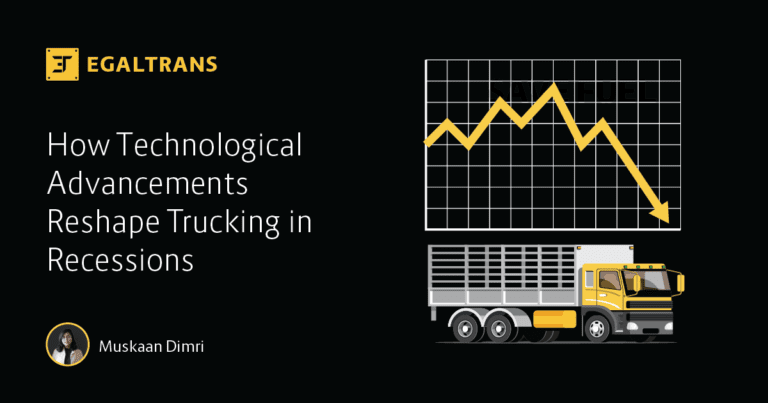In the intricate web of global economies, the trucking industry stands as a vital artery, transporting goods across borders and connecting nations. As economic tides ebb and flow, the international trucking sector inevitably feels the impact. In this article, we explore the profound effects of recession in trucking globally and delve into the data that paints a comprehensive picture.
Factors causing the Economic Downturns in Trucking Sector
The onset of a global recession within the trucking industry is a complex interplay of economic dynamics, industry-specific challenges, and broader global uncertainties. In the trucking sector, this translates into reduced demand for transportation services as businesses scale back production and consumers tighten their belts.
Fuelling this downturn, the industry contends with the added challenge of volatile fuel prices, a significant operational cost. As economic indicators trend downward, companies within the trucking ecosystem face hurdles ranging from supply chain disruptions to workforce adjustments. Examining origins of the global recession unveils a narrative shaped by a delicate balance of economic factors and industry intricacies.
The global recession in the trucking industry can be attributed to a confluence of factors that create a ripple effect throughout the sector.
1. Downturn in Trade Volume
Economic downturns also leads to reduced consumer spending, which subsequently results in a decline in demand for goods. This drop in demand directly affects the transportation industry, as fewer products need to be moved across borders.
2. Fluctuating Fuel Prices
Fuel prices are a significant variable for the trucking industry. Economic downturns can trigger fluctuations in oil prices, impacting operational costs for trucking companies. Analysing past trends during recessions provides valuable insights into the challenges faced by the international trucking community.
3. Supply Chain Disruptions
Recessions disrupt supply chains, creating a domino effect on the trucking industry. Data-driven studies showcase how economic downturns contribute to delays, route alterations, and inventory management challenges for trucking companies engaged in international logistics.
4. Government Policies and Regulations
Governments often implement policies to mitigate the impact of recessions. Analysing data on regulatory changes, trade agreements, and infrastructure investments helps to understand how governmental actions influence international trucking operations during economic downturns.
5. Impact on Trucking Employment
Recessions can lead to fluctuations in employment within the trucking industry. By examining data on job losses, hiring trends, and workforce dynamics, we gain insights into how economic downturns affect the livelihoods of trucking professionals on a global scale.
Navigating Through the Recession for a Better Trucking Business
To navigate recession as a truck fleet owner, main focus should be on strategic cost management. Implement a proactive vehicle maintenance schedule to prevent costly breakdowns. Fleet owners should negotiate favourable terms with clients to maintain healthy relationships while ensuring profitability.
Diversifying services can open new revenue streams, such as offering specialised transportation or partnering with logistics providers. Stay attuned to industry trends and economic indicators, adjusting your business strategy accordingly. Moreover, closely monitor and control expenses, scrutinising every aspect of operations for cost-effectiveness. This might involve renegotiating contracts with suppliers or seeking more competitive deals on essential services. Adaptive financial planning and a resilient operational approach will be crucial in weathering the challenges posed by a recession.
Navigating through the global recession trends we get a dynamic portrait of the international trucking industry. By understanding and adapting to the challenges posed by economic downturns, the trucking sector continues to play a pivotal role in connecting nations and facilitating the flow of goods across borders





